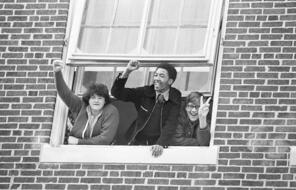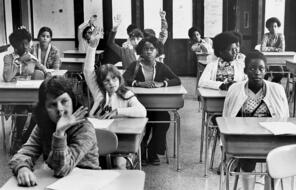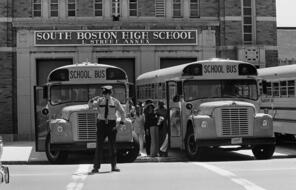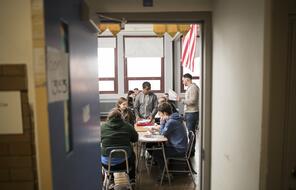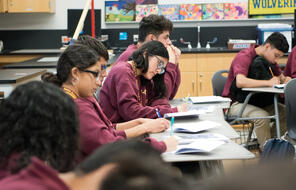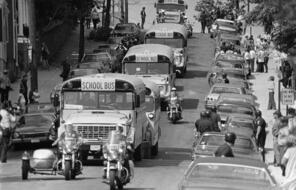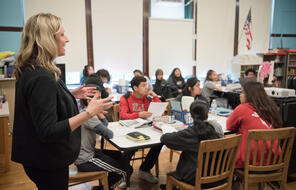Student Protests at English High School
At a Glance
Subject
- Civics & Citizenship
- Social Studies
- Democracy & Civic Engagement
- Human & Civil Rights
- Racism
In September 1968, African American students at Boston’s all-boys English High School had been discussing their dissatisfaction with a variety of the school’s policies. In particular, they were unhappy with “the school’s lack of Black faculty and staff, the school’s shirt-and-tie dress code, and the absence of Black history courses.” 1 When senior Glen Grayson and another student wore dashikis (a brightly colored shirt or tunic often associated with West Africa) to school in protest, they were quickly suspended by the headmaster, Dr. Joseph Malone. According to student Yezid Ninga, Malone “called them clowns and said that their dress was disgraceful. He has no regard for our heritage and culture.” 2
The next day, Friday, September 20, African American students protested outside the school. They formed a new Black Students Union and issued a list of demands, including the following:
- The immediate reinstatement of the two Black students who were suspended for wearing African dress.
- A verbal and written apology from Dr. Malone to the suspended students “for the insult of such an act which in essence denounced their right to be proud of their heritage, culture and Black identity.”
- A written and verbal apology to the Black student body for intimidation over the intercom during and after school.
- That the school permit an assembly of all Black students and teachers, as well as Black community members.
- That the school recognize the Black Students Union and its right to accept leadership from community members and the National Black Students Union Federation.
- That officials at English High School recognize Black Students Liberation Day . . . and that Black students be permitted to miss school on that day without being marked absent.
- That a board consisting of school officials and the Black Students Union review the school’s rules and regulations to ensure that they are respectful and fair to Black students.
- That the Black Students Union be allowed to review any complaints that Black students file against any teacher in the school. 3
By the end of the day, Dr. Malone promised to meet their demands. But the following Monday, Associate Superintendent for Boston Public Schools Louise Welch forced Malone to reverse course and announced that students’ demands would no longer be met. The students walked out again. The Bay State Banner, the Black community newspaper, reported what happened next:
Black students from all Boston high schools gathered at English on Monday to join the cause. Students who had gone to school thinking the agreement was in force jumped out of windows to join the crowd. Many remained inside only to join the protestors after the close of school . . .
One Black student summed it all up: “We come to school for an education. Does it really matter what we dress like as long as we are neat and clean? Is school an institution designed to induce mass conformity or develop the minds of tomorrow’s leaders?”
Another youngster put it this way, “Africa is our home and from it we derive our culture. Black Americans are turning to Africa for identity and dress is very much a part of the search for identity . . .” 4
In the following weeks, African American student protests spread across the city, with support from community leaders. Hundreds attended a rally in Franklin Park on September 25 and then marched to the Jeremiah E. Burke High School, where police used clubs to stop them forcefully. That evening several protesters attended a Boston School Committee meeting, where they were met with insults from committee members. The protests culminated in a school boycott in which 6,000 students stayed out on September 27. On October 1, the school system agreed to give in to the students’ demands over the dress code, but no other demands, if they returned to school. Students agreed and returned to school on October 2, but they continued to push for recognition of Black student unions and other demands. 5
- 1Tess Bundy, “‘Revolutions Happen through Young People!’: The Black Student Movement in the Boston Public Schools, 1968–1971,” Journal of Urban History 43, issue 2 (March 2017): 277–78, doi: 10.1177/0096144216688277.
- 2Dan Queen, “Black Student Union Asks Recognition,” Bay State Banner (Boston), September 26, 1968.
- 3Queen, “Black Student Union Asks Recognition.”
- 4Queen, “Black Student Union Asks Recognition.”
- 5Bundy, “Revolutions Happen through Young People!,” 279–80.




